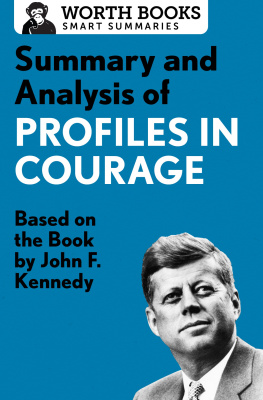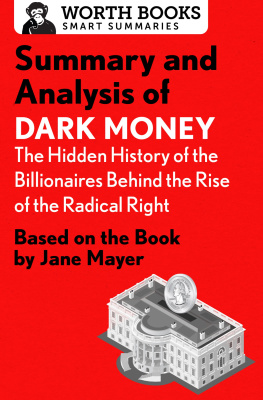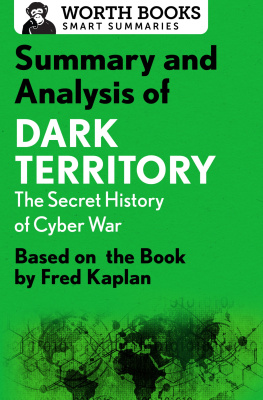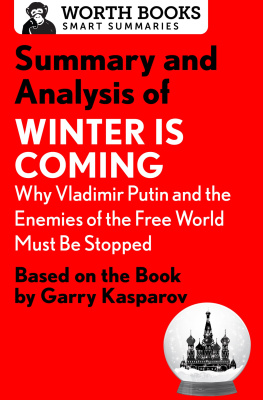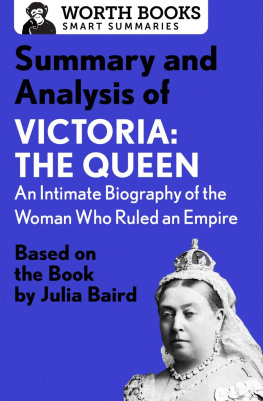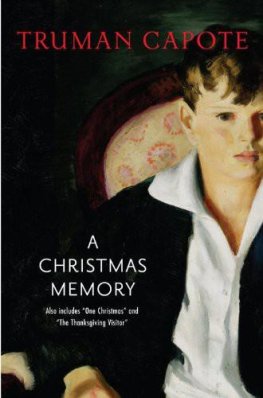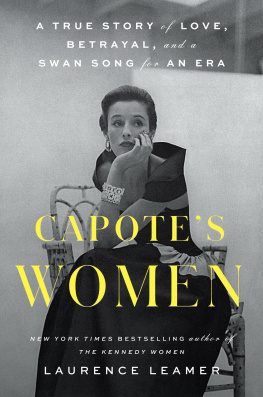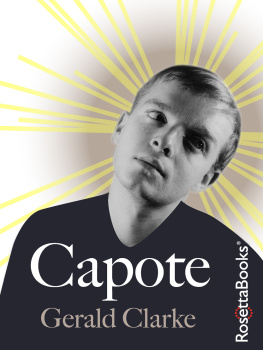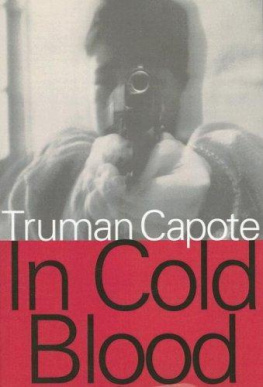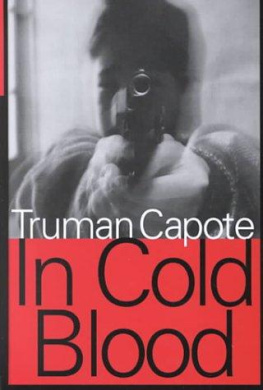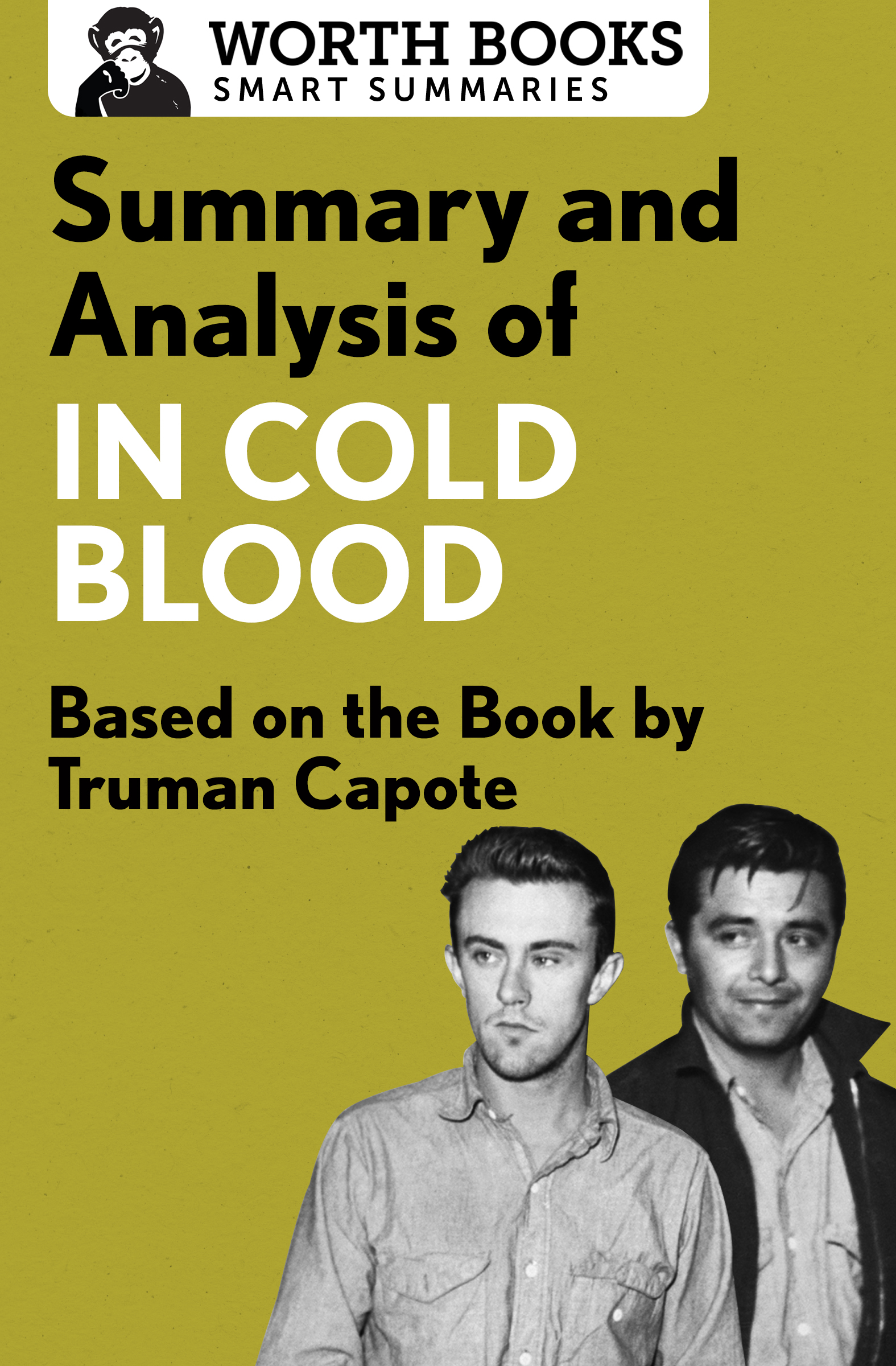Summary and Analysis of
In Cold Blood
Based on the Book by Truman Capote

Contents
Context
With In Cold Blood: A True Account of a Multiple Murder and Its Consequences , Truman Capote created what he called a serious new art form: the nonfiction novel. In 1959, when Capote first started thinking about In Cold Blood , he was already a brilliant fixture of the New York literary scene, author of celebrated short stories, essays, and novels, including the bestselling novella Breakfast at Tiffanys . But, according to Capote, he wished to explore journalism as a potential artistic medium by applying his novelistic gifts to a true storythat of a 1959 multiple murder in remote western Kansas, its ramifications, and the psychology of its perpetrators.
By almost any measure, he succeeded: The book, originally published as a wildly popular four-part series in the New Yorker before Random House released it in book form 1966, was met with laudatory reviews and enormous commercial success. With In Cold Blood , Capote limned the dark, violent underbelly of mid-twentieth-century America, chilling and captivating readers with his eloquent and penetrating description of the two murderers, Perry Smith and Richard Hickock, with whom he corresponded for five years, from the time of their arrest to their execution. He regularly interviewed Smith and Hickock when they were on death row, and developed a fascination with Smith in particular that critics and biographers have speculated went beyond the typical interest a journalist has for his subject.
In Cold Blood is considered to be Capotes personal masterpiece, as well as a pioneering work of true crime and literary nonfiction. Today, the book remains one of the bestselling true crime books in publishing history.
Overview
The town of Holcomb rises from the plains of western Kansas, where tawny fields of wheat and dusty white roads stretch long and flat beneath a wide blue sky. In Cold Blood begins here, in Holcomb, where Herb Clutter; his wife, Bonnie; and their children, Nancy and Kenyon, livedand where they died, shot to death in in the predawn hours of November 15, 1959.
There are two sides to In Cold Blood . The first is the story of the townspeople and investigators, who reckon with grief and fear in the aftermath of the killing. The second tells the story of the two murderers, Richard Eugene Hickock and Perry Edward Smith. Placed side by side, these two narrative threads examine the multiple facets of a particular murder, illuminating a darker side to postWorld War II, small-town America.
In Cold Blood represents the culmination of Truman Capotes painstaking research, extensive interviews, and practiced storytelling techniques. The third-person narrative is often cinematic in style, full of transcribed quotes and detail-rich; the book cuts back and forth between delicately counterpoised scenes of the Clutter family and the two men who killed them.
Part I: The Last to See Them Alive weaves the stories of the Clutters last day alive, the discovery of their bodies, and Hickock and Smiths journey to Holcomb. From the first description of the crime scene to the prison execution that concludes the book, the identity of the killers is clear. What remains unknown, and what drives the suspense throughout the rest of the book, is how the murderers killed their victims, and why.
Part II: Persons Unknown describes the stalled investigation, which is led by Kansas Bureau of Investigation agent Alvin Adams Dewey. Hickock and Smith, who seem to have no connection to the Clutters whatsoever, decamp to Mexico after a check-passing spree in Kansas. Our understanding of the killers minds and personalities deepens: Perry is dreamy, angry, and broken by a horrific childhood, while Dick is charming, cavalier, and cruel. While the people of Holcomb suspect each other and mourn the loss of a prominent family, Dick and Perry spend their money and return to the States, certain that police will never link them to the Clutter family.
In Part III: Answer, their confidence proves misplaced. An old cellmate of Hickocks named Floyd Wells puts two and two together and speaks up about Hickock and Perry. Wells once worked for Herb Clutter and told Hickock about River Valley Farm. Las Vegas police arrest the pair in December of 1959. Kansas investigators extract their confessions. Dick and Perry admit to the murders, but they themselves dont seem to know quite why they did it. In the minds of the killers, the horrific slaughter of four carries almost no meaning.
The final section of the book, The Corner, describes the murder trial and its aftermath. Dick and Perry are sentenced to death, and, after five years on death row, they are hanged. So ends the tale of an American murder.
Summary
Part I: The Last to See Them Alive
On November 14, 1959, the members of the Clutter family are living out an ordinary autumn Saturday on River Valley Farm, unaware that it will be their last. Herb Clutter, the family patriarch, awakens at seven and eats a light breakfast before taking a walk on his farm. Later in the morning, he drives out to Garden City, Kansas, where he leads a meeting of the Finney County 4-H Club.
Mr. Clutters only son, fifteen-year-old Kenyon Clutter, accompanies his father to the 4-H meeting and spends the rest of his afternoon varnishing a mahogany hope chest he made as a wedding present for his older sister Beverly. (The two eldest Clutter children no longer live at home: Eveanna, married, lives in Illinois, while Beverly is studying to be a nurse in Kansas City.)
Nancy Clutter, the sixteen-year-old town darling, flits between several engagements: she chats with her close friend Sue Kidwell on the phone, teaches a neighbor girl how to bake a cherry pie, helps another local girl with a trumpet solo, and runs several errands for her mother, Bonnie Clutter, who has only recently returned from a two-week stay in a psychiatric hospital. Mrs. Clutter rises briefly, but soon returns to bed.
Later that afternoon, Mr. Clutter purchases a $40,000 life insurance policy; after dinner, Nancys boyfriend, Bobby Rupp, comes over to watch television. He leaves around ten oclock with plans to see Nancy again the next day.
Meanwhile, a black 1949 Chevrolet leaves Olathe, Kansas, around three oclock and drives toward Holcomb, four hundred miles away. Driver and passenger are Richard Hickock and Perry Smith, two ex-convicts who celled together at the Kansas State Penitentiary in Lansing.
The two men talk; Perry plays his guitar. They stop in Emporia, Kansas, where they purchase a pair of rubber gloves and a roll of white nylon rope; they also try and fail to buy black nylon stockings. They eat dinner in Great Bend, and drive on into Holcomb as a full moon rises over the prairie.
The Clutters, devout Methodists, often drive a young friend, Nancy Ewalt, to Sunday church services in Garden Citybut on Sunday, November 15, 1959, the Clutter family does not seem to be awake when Nancy Ewalt arrives at their door. Nancy Ewalt and her father drive to the home of Sue Kidwell, to ask if she knows where the family might be. Sue doesnt know. They go back to the Clutter house and the two girls go inside.
They run out screaming. Nancy Clutter is dead.
Later, the sheriff, along with a high school teacher, a deputy, and Mr. Ewalt, discover the bodies of the other three family members. Mrs. Clutter, like Nancy, had been bound, hand and foot, with nylon rope and killed with a shotgun blast to the head. Kenyon and Mr. Clutter lay dead downstairs: Kenyon on the couch, bound and shot like his mother and sister, and Mr. Clutter in the furnace room, with his throat cut and a bullet wound in his head.



